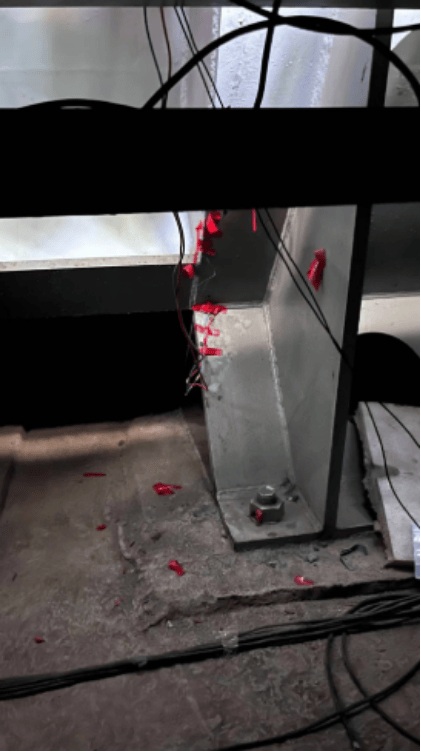Wind Tunnel Structural Strain Testing for Enhanced Integrity
Project name: Wind Tunnel Structural Strain Testing for Enhanced Integrity
May 2023 – A university research team conducted structural strain testing on an operational wind tunnel using the SE-86H High-Speed Static Stress-Strain Testing System at a national test facility.
Test Configuration
1. Sensor Layout
4 strain gauges mounted on the wind tunnel's lower structure (steel support frame)
4 strain gauges installed symmetrically on the internal model mount (aerodynamic balance interface)
2. Test Conditions
Wind speed: Mach 0.3–0.8 (variable during test)
Sampling rate: 2 kHz per channel (16-bit resolution)
Test duration: 6 hours (including start-up/transient phases)
Key Measurement Objectives
Foundation Structural Integrity
Monitored base frame bending moments during:
Start-up vibrations (0–30 sec)
Steady-state operation (30–180 min)
Emergency brake transients (simulated system halt)
Model Mount Rigidity Verification
Quantified asymmetric loading effects during:
Yaw/pitch sweeps (±20° deflections)
Dynamic model changes (simulated store separation)
Data Analysis Highlights
Strain-Time History Analysis
Identified 0.8Hz structural resonance (addressed with tuned mass dampers)
Detected 12% higher than expected loads at upstream support legs
Spatial Strain Distribution
3D strain mapping revealed:
35% load asymmetry in model mount during crosswind simulations
Localized yielding (ε > 0.2%) at two weld joints
Engineering Outcomes
Structural Upgrades Implemented
Added stiffening ribs to reduce base frame vibrations by 60%
Replaced model mount bushings with higher-stiffness material
Operational Improvements
Established new safety limits for:
Maximum continuous operation time (4 hours → 3 hours)
Allowable model mass asymmetry (±5kg → ±3kg)
Validation Methodologies
Developed wind tunnel-specific strain thresholds:
Alert level: 1500με (visual inspection trigger)
Shutdown level: 2500με (prevent plastic deformation)
Key Terms:
Aerodynamic balance: Force measurement system inside wind tunnels
Tuned mass damper: Vibration control device
Store separation: Simulated weapon/equipment release testing
This test provided first-ever operational strain data for this wind tunnel class, enabling predictive maintenance and extending facility service life by estimated 8 years.

